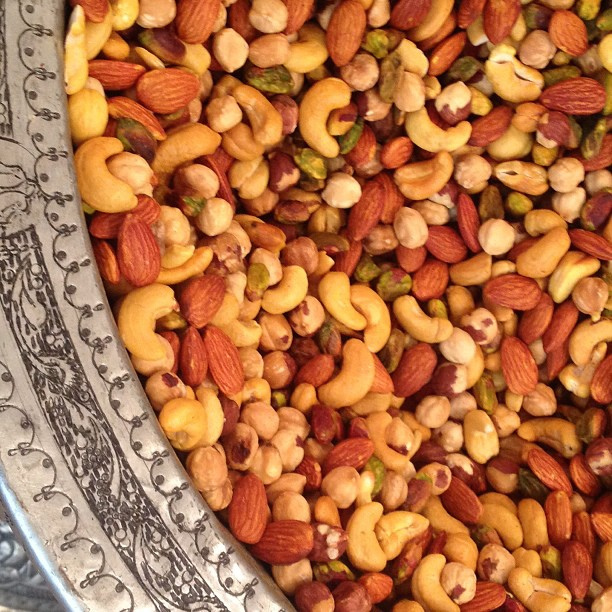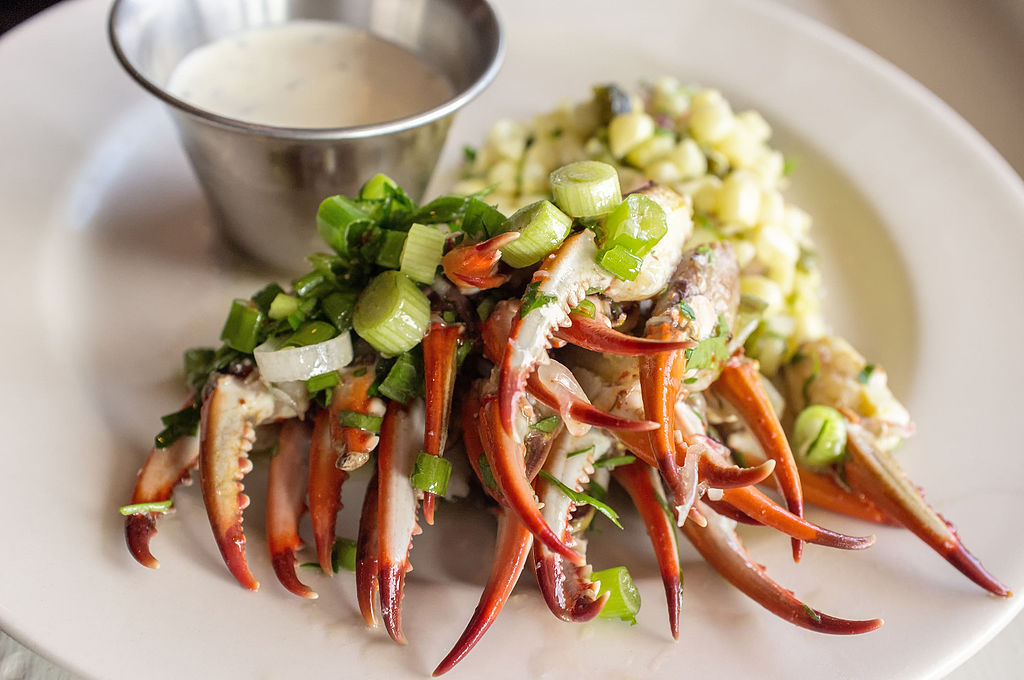The adorable, always humorous MBA Jane is my way of honoring our Sisterhood Merit Badge program, now with 6,962 dues-paying members who have earned an amazing number of merit badges so far—9,905 total! Take it away, MBA Jane!!! ~MaryJane
Wondering who I am? I’m Merit Badge Awardee Jane (MBA Jane for short). In my former life …
For this week’s Farm Kitchen/Food Allergy Awareness Beginner Level Merit Badge, I researched a common malady (at least these days, it seems to be) amongst the population: food allergies.
Being blessed with the constitution of a horse with a cast-iron stomach lining myself (I hate to brag, but ya know it’s true), I was appalled at my findings, and at what these poor men, women, and children go through just to … to eat.

Photo by Jameson Fink via Flickr
Some things I found that made me cluck like a mother hen having a hissy fit:
- Researchers estimate that up to 15 million Americans have food allergies.
- This potentially deadly disease affects 1 in every 13 children (under 18 years of age) in the U.S. That’s roughly two in every classroom.
- The economic cost of children’s food allergies is nearly $25 billion per year.
- According to a study released in 2013 by the Centers for Disease Control and Prevention, food allergies among children increased approximately 50% between 1997 and 2011.
- The number of people who have a food allergy is growing, but there is no clear answer as to why.*
Hmmm, said I, as I sipped my whole cow’s-milk latte and munched on a coconut-and-peanut-butter cookie. These were depressing statistics indeed. I tossed back a handful of almonds and walnuts as I pondered.
… And came up with no clear answers. If the experts weren’t sure what was causing all these allergies, I likely wasn’t going to find the conclusion either. Unless, of course, the experts weren’t looking in the right places? Could it be we weren’t necessarily allergic to the foods themselves as much as we were allergic to the pesticides, herbicides, chemicals, and processing that were used in supplying these said foods? It bore more thinking about, as I bit into a juicy strawberry and washed it down with some shellfish.

photo by Ralph Daily via Wikimedia Commons
What? I eat according to what I’m reading. So sue me!
Next up in my merit badge earning was finding out which foods my neighbors and friends were allergic to, and then finding examples of them at the grocery store.
Me thought this would be a snap.
Me thought wrong.
Turns out my gal-pal, Midge, is allergic to (of all the weird things to be allergic to) the lowly potato.
Okay, I thought to myself as I dunked a shrimp in a wheat batter and prepared to fry it in peanut oil, how hard can it be to avoid a spud?
Granted, a life without fries or chips is not the highest quality of life I can think of, but really? It can’t be that hard to avoid a ‘tator.
Ah, my naiveté had struck again. Potatoes are a common ingredient in all sorts of foods you’d never suspect. They’re used as a thickening agent in all sorts of things, even in candy. Say what now??
Well, color me red.
Mmm, red potatoes. (Sorry, Midge.)
I really was feeling sorry for my food allergic friends. This badge was getting depressing, girls. My only hope was the belief that some intrepid farmgirl out there was going to find an answer for this on-the-rise epidemic, and quick.
Hungry peeps everywhere are standing by.
*Statistics found at Food Allergy Research and Education.






















































In addition to true food allergies, there are even more food intolerances which give people all sorts of miseries. Take my problem with garlic and onions, for instance. My trachea does not swell up or I don’t break out in huge hives, but I cannot digest it and it will cause havoc within my gut for about 24 hours. After lots of reading on garlic, it turns out that the garlic and onion family have certain long chains of carbohydrates that many people cannot break down properly. It is this ability to not be able to break the sugars down that creates the problem. Oddly enough, the shallot, which is in the same family but on a different branch of the tree so to speak, has slightly different carb chains and works OK for me to use on a limited basis. In reading about all of these issues, I also learned more about the huge importance of the microbiology flora of the human gut. The microbes of the gut are essential for proper digestion and when people have to take certain drugs, the flora is changed and the result can be that certain foods can no longer be digested properly. When drugs are not the culprit, it can also be the sort of contaminants that are in the water supply and food sources. Hence when people travel to certain places, they become very ill if they end up drinking the water or eating raw foods. The people of the place, however, have adjusted their micro flora to their environment and do not get sick.
And those potatoes? I wonder if the problem is that they belong with tomatoes and eggplants in the nightshade family. Sweet potatoes, on the other hand, are in the morning glory family, I think, and are a different species. Who knew? Except that babies are introduced to sweet potatoes way long before white potatoes for this reason.
It gets to be way too confusing sometimes to try and figure out what is the culprit.
I have an issue with onions, too,Winnie (but strangely enough not garlic). I can eat them if they’ve been completely over-cooked and caramelized, but if there’s a tiny bit of crunch to them, my mouth starts to water just like when you’re getting ready to vomit and I’m immediately nauseous. It’s always been such a silly thing to me that I’ve never actually researched the why of it. Long chains of carbs, eh? Oddly enough, one of my sons seems to have inherited this peculiarity but he actually does end up with the rash so his is a bit more severe.
My brother is allergic to shellfish with dire consequences if he eats even the tiniest amount. It’s very scary.